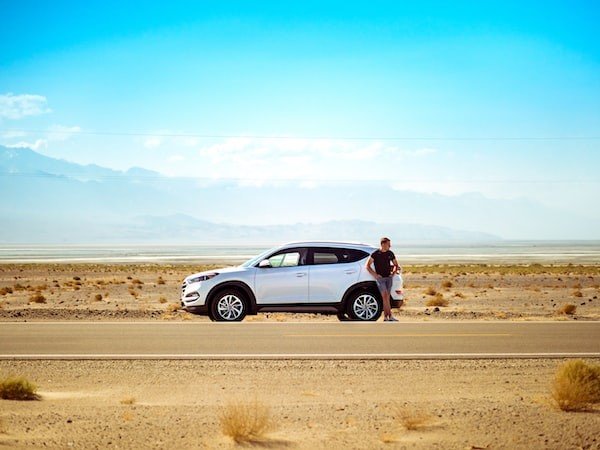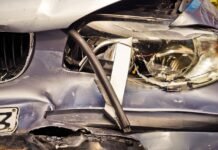Car accidents are stressful and costly if you’re not adequately prepared. In the event of a car crash, insurance protects you and any passengers through medical coverage and property damage coverage. If you’re new to insurance, take a look at this guide to learn more about the specific protections you earn by getting car insurance.
Damage Coverage

If you are in a car accident and are at fault, your car insurance will likely help pay for the damage to the other car, though you may also be responsible for paying your own deductible. If you are not at fault in the accident, your car insurance will likely help to pay for the damage to your car, and you will not have to pay your deductible. There are two types of damage coverage: collision and comprehensive. Collision coverage pays for the costs of repairing your car if it’s damaged in a collision with another vehicle or object. Comprehensive coverage pays for the costs of repairing your car if it’s damaged in some other way, like a hail storm or a tornado. Most car insurance policies include both collision and comprehensive coverage, but you can choose to have just one or the other. If you only have collision coverage, your insurance company won’t pay for the costs of repairing your car if it’s damaged in some other way. And if you only have comprehensive coverage, your insurance company won’t pay for the costs of repairing your car if it’s damaged in a collision.
Medical Expense Coverage
Like most people, you probably think of car insurance as a way to protect yourself financially in an accident. But did you know that car insurance can also help cover the costs of medical expenses related to an accident? Medical expense coverage is a type of car insurance coverage that helps pay for medical care after an accident, including hospital bills, doctor’s visits, and prescription drugs. Medical expense coverage can be a great way to protect yourself financially in an accident—especially if you’re facing a significant medical bill.
In many states, Personal Injury Protection (PIP) car insurance is required. This type of auto insurance coverage pays for your medical expenses, lost wages, and other related costs if you are injured in a car accident, regardless of who is at fault. PIP covers you and your passengers, so it’s a good idea to have this type of coverage even if you don’t have any passengers in your car. PIP also covers you if you are hit by a car while walking or biking. Most PIP policies have a limit of $10,000 or $20,000. This means that the policy will pay up to $10,000 or $20,000 for your medical expenses and related costs. If your medical expenses exceed this amount, you will be responsible for paying the difference.
Uninsured Motorist Coverage

If you’re involved in a car accident, and the other driver doesn’t have insurance, you could be left responsible for the damages to both cars. This is where uninsured motorist coverage comes in. Uninsured motorist coverage protects you if you are in an accident with a driver who doesn’t have insurance. This coverage can help pay for the damages to your car and any injuries you may have sustained. It’s important to note that uninsured motorist coverage only applies to accidents with other drivers. If you are in a collision with a pedestrian or a cyclist, uninsured motorist coverage will not help you.
Rental Car Reimbursement Coverage
Rental car reimbursement coverage may help pay for the cost of the rental car. This coverage is often included in car insurance policies, but it’s important to review your policy to be sure. There are a few things to keep in mind when using rental car reimbursement coverage. The coverage may have a limit on the amount it will pay for each day or the total rental cost, and it may only cover certain types of cars. For example, your policy may only cover economy cars or standard cars. If you need a luxury car or an SUV, you may need to pay for the rental yourself. Rental car reimbursement coverage may limit the number of days you can use the coverage. So if you need a rental car after an accident, rental car reimbursement coverage can be a great way to help you commute without interruption.
Gap Insurance
Gap insurance is an optional form of insurance that can help car owners cover the “gap” between the amount they owe on their car and the car’s actual cash value in the event of a total loss. For example, if you owe $15,000 on your car but the car is only worth $10,000, gap insurance would cover the $5,000 difference. Gap insurance is typically offered as an add-on to your car insurance policy, and it’s important to note that it does not cover the entire value of your car—only the “gap” between what you owe and the car’s actual cash value. Gap insurance is a great option for drivers who are leasing or financing their car because it can help protect them from owing more money on their car than it’s actually worth.
Roadside Assistance Coverage
Roadside assistance coverage is a type of insurance that is designed to help drivers who have car trouble. This type of coverage can provide motorists with a variety of services, such as towing, battery service, and fuel delivery. Roadside assistance can be a valuable asset if you are stranded on the side of the road, so it’s worth adding to your car insurance plan.
There are a few things to keep in mind when choosing a roadside assistance plan. First, be sure to read the terms and conditions carefully to make sure that the services you need are covered. Second, be sure to ask about the provider’s towing policy. Some providers may only tow a vehicle a certain distance, while others may tow it anywhere in the country. Finally, be sure to ask about the provider’s reimbursement policy. Some providers may require you to pay for the services upfront and then reimburse you later, while others may allow you to pay for the services later.
Car insurance provides crucial protections that can help drivers and passengers recover financially, receive medical care, and have their vehicles repaired or replaced. If you’re interested in car insurance, compare your options and talk to an advisor to discuss your coverage.



